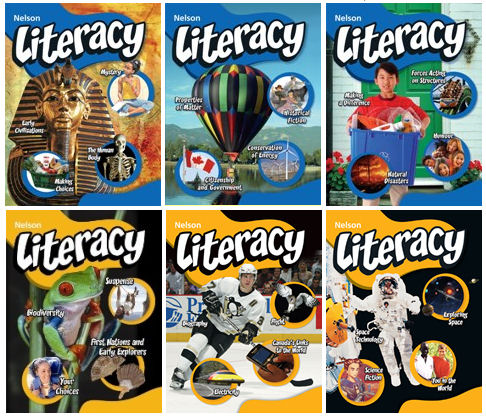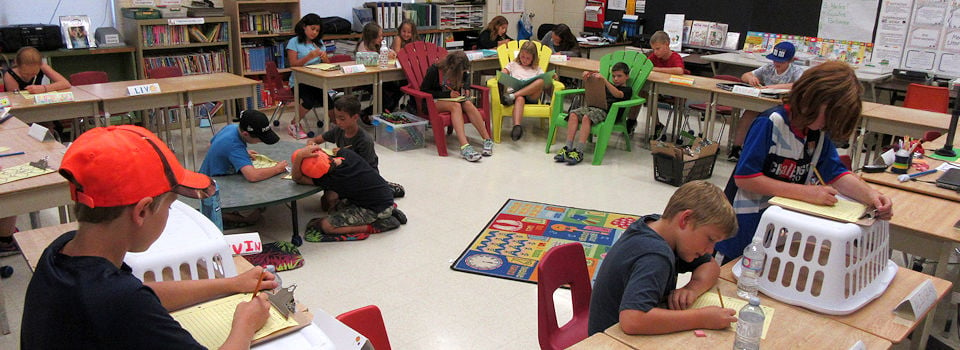The class spent the month of September reviewing literacy concepts and skills, completing CASI reading assessments and writing "recounts." Next week, Guided Reading will begin and students will start working more independently on literacy skills.
Our balanced literacy program includes reading, writing, oral communication and media studies. These are some of the elements of our reading and writing programs:

Daily Language Review "bell work" provides grammar, punctuation, word usage and sentence editing practice.

Daily Five "is a structure that helps students develop the daily habits of reading, writing, and working independently that will lead to a lifetime of literacy independence." Students engage in three twenty-minute activity rotations, within a morning literacy block, and are provided with choice regarding the order in which they complete various tasks.
---------------------------------------------
These are the cornerstones of Daily Five:
Read to Self: The best way for a student to become a better reader is to practice each day, with books the student chooses at his/her
just-right reading level.
Read to Someone: Reading to someone provides more time to practice strategies, helping students work on fluency and expression, check for understanding, hear their own voice, and share in the learning community.
Spelling - Word Work: Correct spelling allows for more fluent writing, thus speeding up the ability to write and get thinking down on paper. This is an essential foundation for writers. Every two weeks, students are provided with five words to explore (e.g. homonyms or words from our Science and Social Studies curriculum) and choose five other words from their personal reading and writing.
Work on Writing: Just like reading, the best way for students to become better writers is to practice writing each day. During Daily Five, students have an opportunity to work on "Writer's Workshop" assignments, Nelson Literacy reading reflections or journal entries.
Listen to Reading: When students hear examples of good literature and fluent reading, they learn more words, thus expanding their vocabulary and becoming better readers. In our classroom, "listen to reading" involves the teacher or a student reading a section of a chapter book aloud to the class.
---------------------------------------------

Each student in our class receives regular Guided Reading instruction, in a small group setting. Our Guided Reading resource is the Nelson Literacy Kit, which includes reading folders that connect to Science, Social Studies, Health and Character Education. Pictured above are samples of Grade 5 (top) and Grade 6 (bottom) Guided Reading folders.

We also utilize Nelson Literacy student books, which contain Shared and Independent Reading selections and reading reflection prompts. We use these books to enrich our studies of various subjects. The Grade 5 books are shown on the top row and the Grade 6 books on the bottom.

Writer's Workshop includes the study and practice of various forms of writing. These include: narratives, recounts, procedures, discussions, explanations, reports, and persuasive letters. Proofreading and editing of a student's own work, providing feedback on classmates' writng and goal setting toward becoming better writers are also focal points within our writing program. This year, students at our school are creating writing portfolios in binders provided by the school board for this purpose.
---------------------------------------------
Oral and Media Literacy comprise the the other two strands in our balanced literacy program. In future BLOG posts, student-reporters will provide updates about our learning in these, and other, subject areas.
My next BLOG post will feature the elements of our Numeracy (Math) program.
If you have any questions or comments, feel free to e-mail me: mblack@mail1.scdsb.on.ca or to add a comment to this page.
